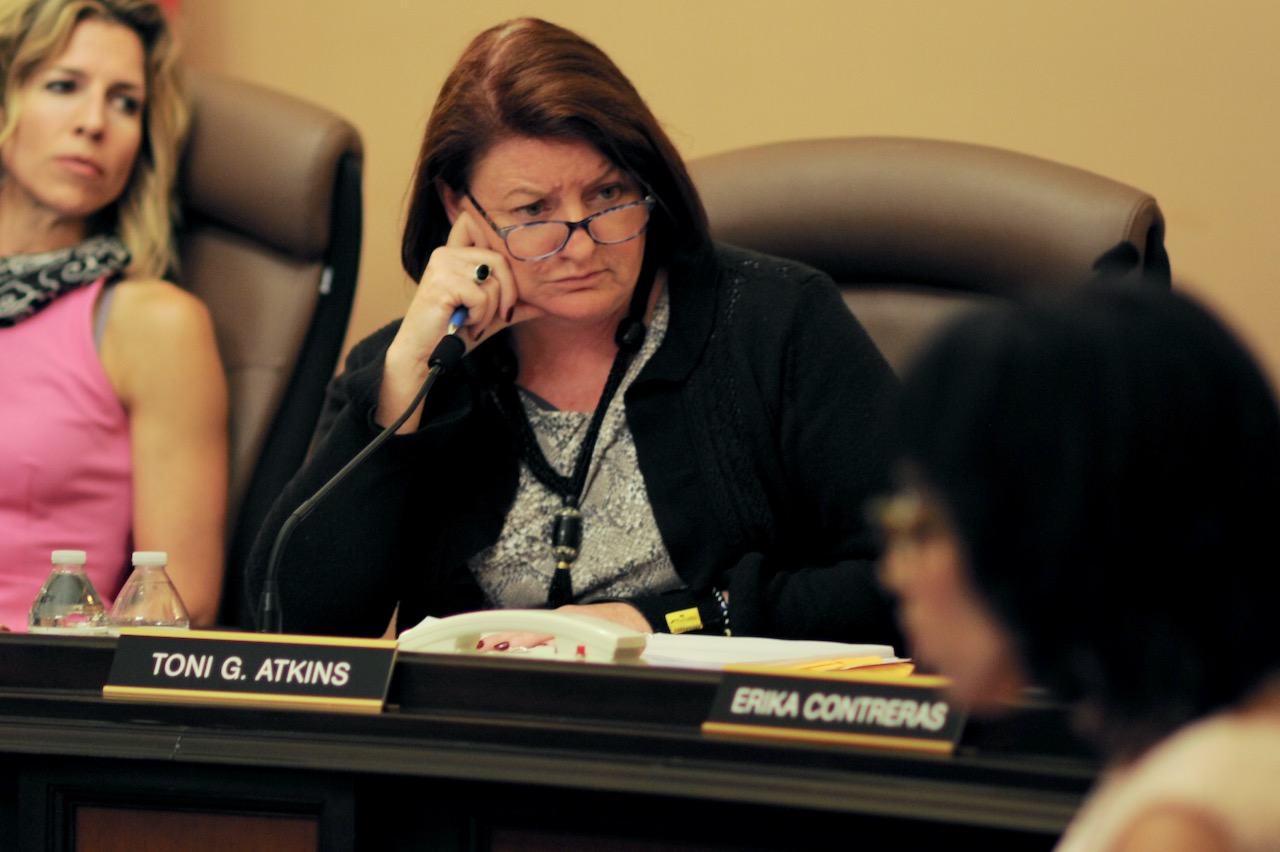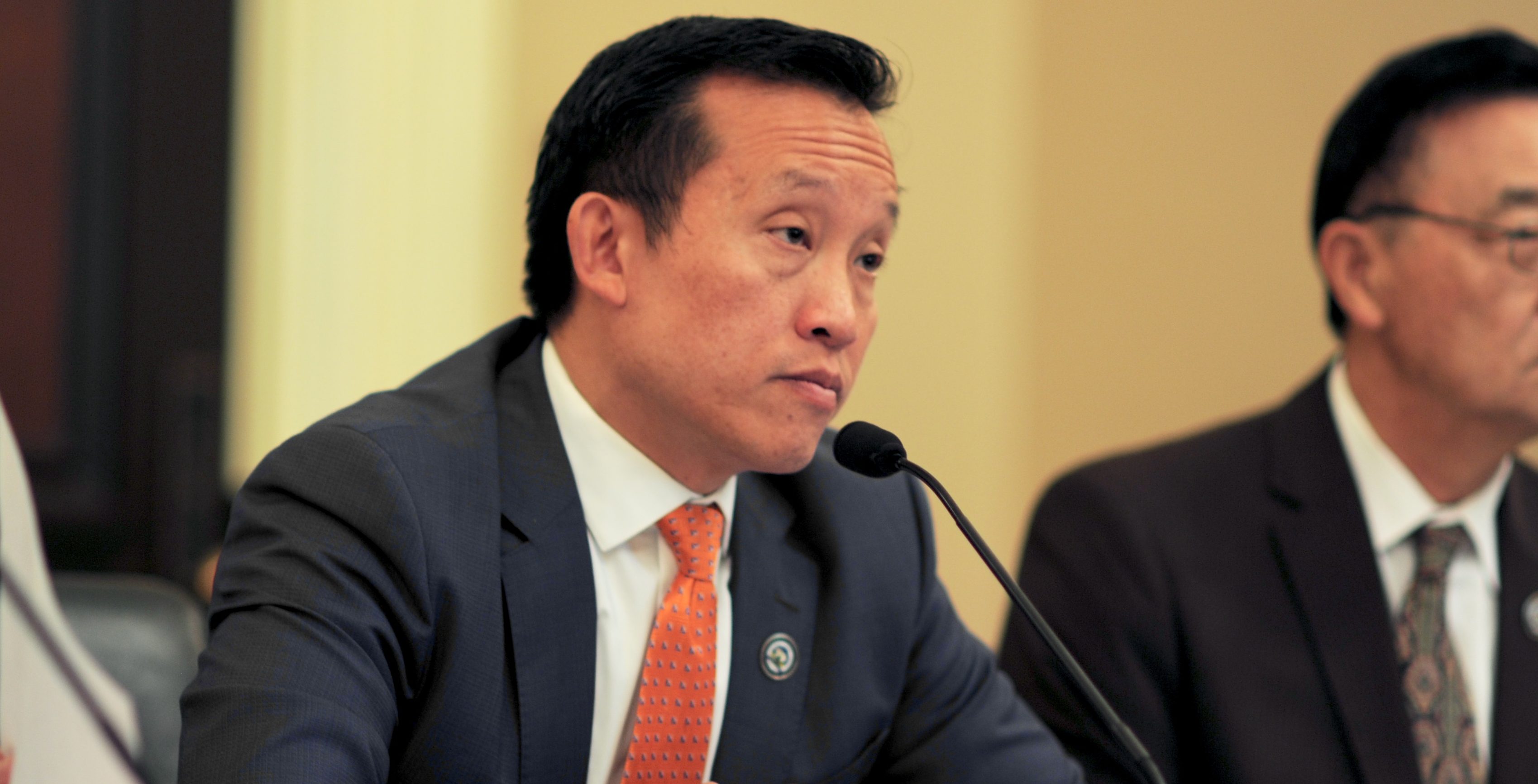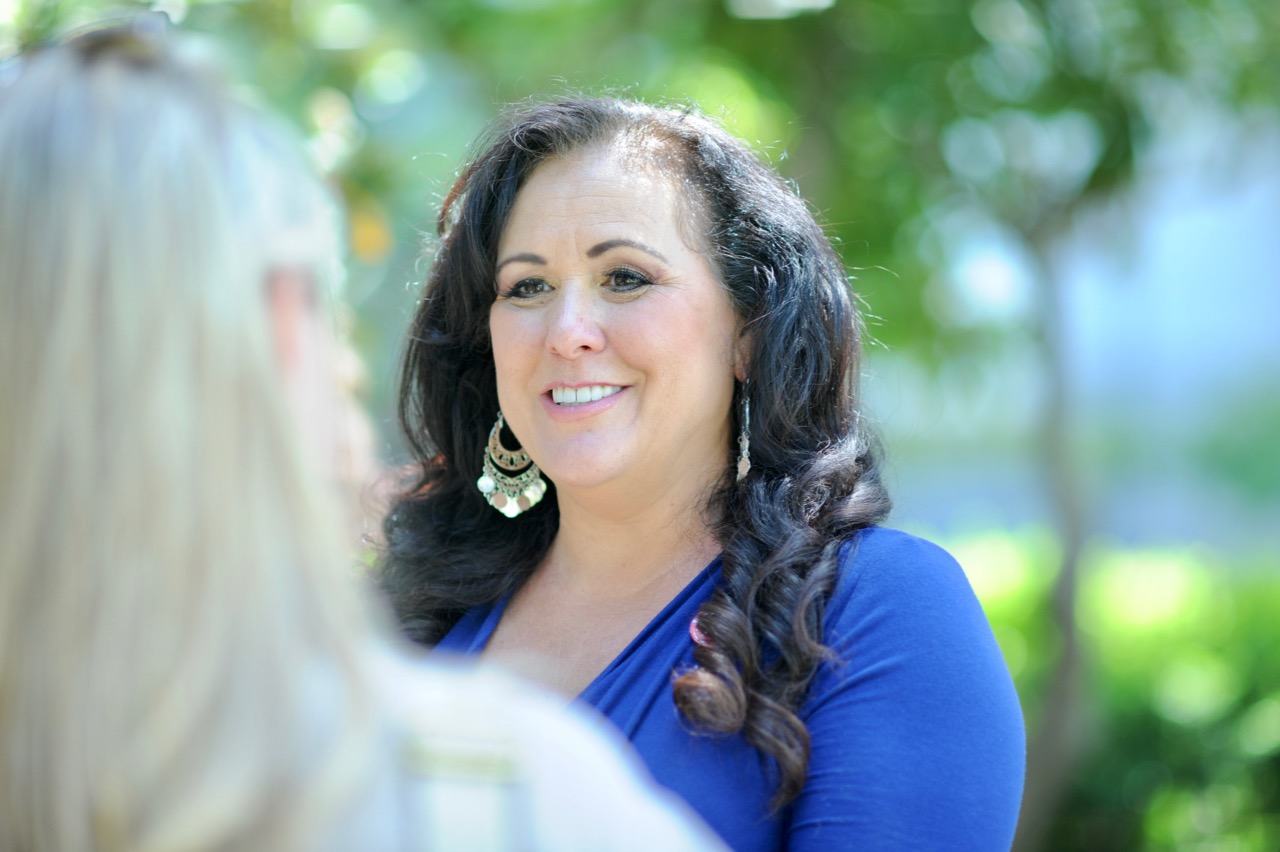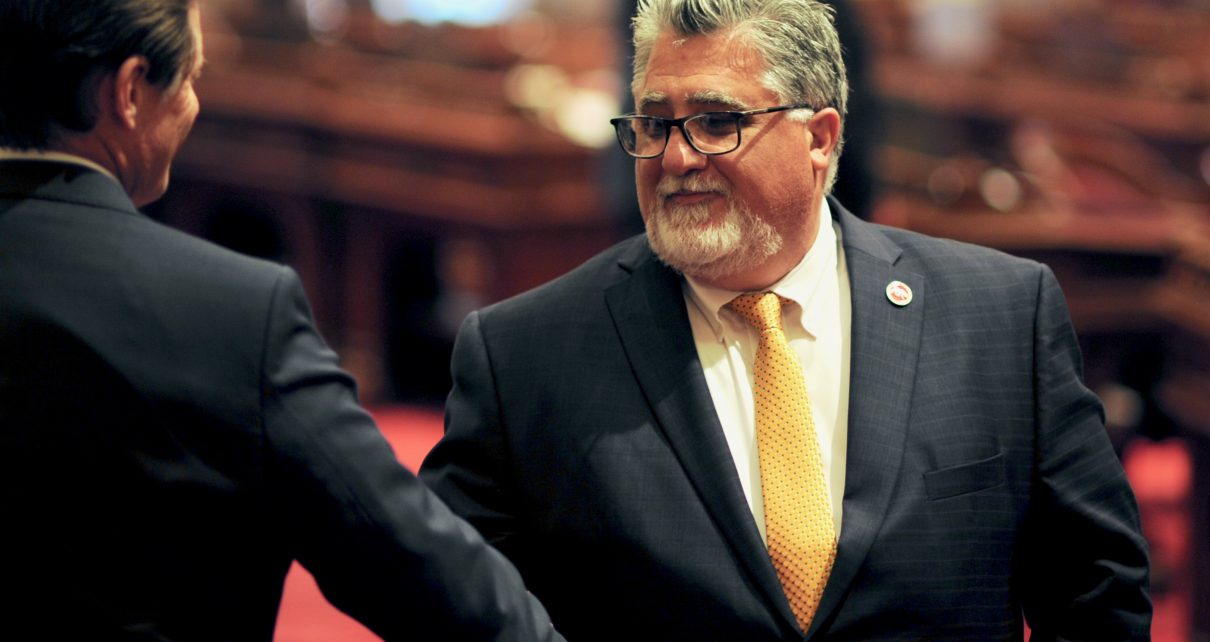
Senator Anthony Portantino. (Photo: Kevin Sanders for California Globe)
Two Senate Bills Target Chemicals Found in Firefighting Foam
SB 1044 and SB 1056 call for partial banning and water testing of the harmful chemicals
By Evan Symon, February 20, 2020 3:48 pm
Two bills that call for the partial banning and water testing of chemicals called perfluoroalkyl and polyfluoroalkyl substances (PFAS) were introduced to the Senate on Tuesday.
Two bills against PFAS
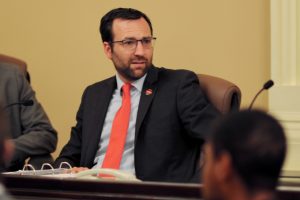
Senate Bill 1044, authored by Senator Ben Allen (D-Santa Monica) was introduced first. SB 1044 would ban the manufacture, sale and use of firefighting foam that includes PFAS by 2022. The state Fire Marshall would also be responsible in tracking sales and keeping the public informed of the ban. A civil penalty would be included in which fire departments themselves could be held accountable for post-2022 use of PFAS.
The other bill, Senate Bill 1056, was introduced to the Senate shortly afterwards. Authored by Senators Anthony Portantino (D-La Canada Flintridge), a longtime writer of chemical pollutant bills, and Lena Gonzalez (D-Long Beach), SB 1056 would have the State Water Resources Control Board test drinking water, groundwater, and surface water across California for all PFAS chemical types by 2022. Monitoring for PFAS by a Board laboratory would subsequently commence.
Dangers of PFAS
Both bills were written following years of reports highlighting the dangers of PFAS.
PFAS, a component in many foam-based firefighting equipment, have been linked to increasing cancer, liver disease, thyroid disease, increased asthma, decreased fertility, and a host of other problems. The CDC itself has found that they are also more dangerous than previously thought. And since PFAS don’t break down naturally in the environment, any exposure stays with the user forever, greatly endangering fire victims, bystanders, and especially firefighters themselves.
Following the many wildfires in the late 2010’s, researchers found many chemicals entrenched in scorched areas from firefighting equipment, most notably PFAS. These not only greatly harmed the environment, but also greatly harmed the firefighters putting out the wildfires. And while PFAS can be polluted through other means, such as around chemical factories that produce it, the wildfires and subsequent rains brought in a spike in PFAS levels in water around the state. Tests confirmed that an increase of wells and water sources now had PSAS following the wildfires, and because of the chemicals resiliency, have stayed there.
Early support for the bills

SB 1044 and SB 1056 supporters have largely said that public safety, environmental protection, and firefighter safety were the main reasons for the bills.
“We have a duty to ensure that Californians have clean water to drink,” said Senator Portantino about SB 1056 in a press statement. “Concern about potentially dangerous chemicals has risen in recent years and I believe now is the right time for the legislature to increase our efforts to have a clean water supply. I don’t think we can rely on Washington to solve this issue and California must act. I hope to engender broad bi partisan support for this unifying call for clean water.”
Senator Gonzalez, his co-sponsor, added that “Safe drinking water is essential for everyone. It is crucial that we prioritize a standardized method for testing these “forever chemicals” known as PFAS that have been found in our water. I am committed to moving this issue forward.”
In addition to cancer prevention organizations and environmental groups, many firefighters have come out in support of the ban.
“I’ve seen the foam be used. We all have,” said firefighter Randy Bachman, who helped battle several wildfires in 2018 and 2019. “You don’t use AFFF (aqueous film forming foam) for every fire, but you use it enough. But if it’s harming us and the people we’re supposed to be saving, I don’t think we should be using it. I always new in the back of my mind that these were dangerous chemicals, but hearing that they can cause cancer, that did it.”
“My dad used to tell me how a truck coming by spraying DDT to get rid of mosquitos would mist by neighborhoods and my kids were shocked at that because they know how dangerous it is from school. I hate to see it go because it is effective in taking out fires, but DDT also killed a lot of pests and look at what it did.”
“This might be our version of that.”
No opposition to the bills has yet to be formed.
Currently California has hundreds of known PFAS contaminated sites, with large clusters around the Los Angeles, Sacramento, and Bay areas. Both bills are expected to be assigned committees within the week.
- Oracle Moving Headquarters Out Of Austin Only 4 Years After Moving Out Of California - April 26, 2024
- Congressman Adam Schiff Robbed of his Luggage in San Francisco Car Break In - April 26, 2024
- U.S. Senate Candidate Steve Garvey Denounces Protestors On Campuses Across California, Nation - April 25, 2024


